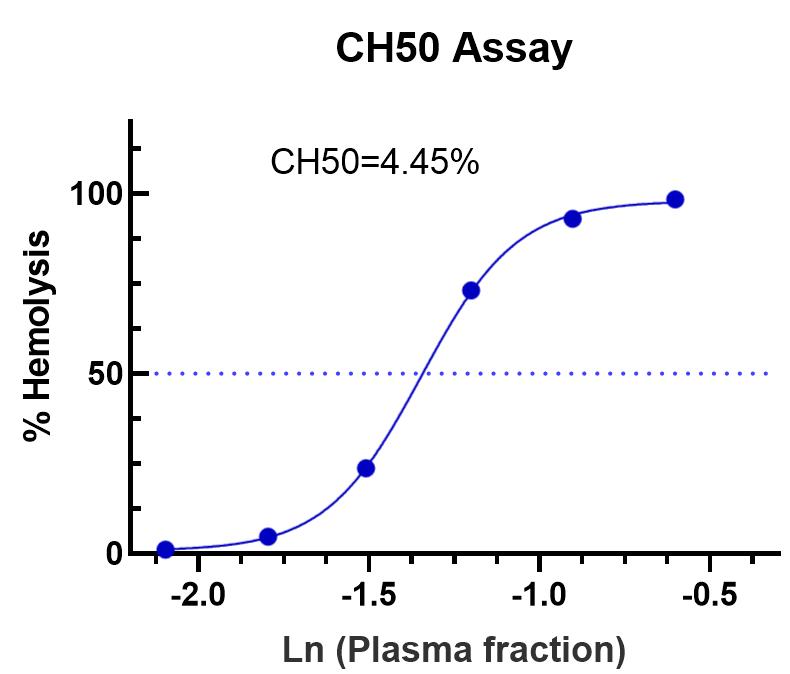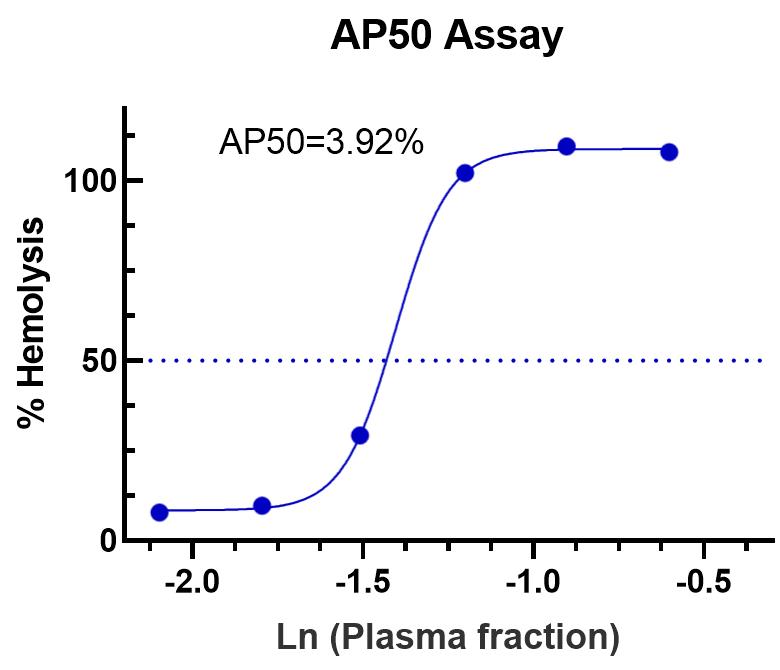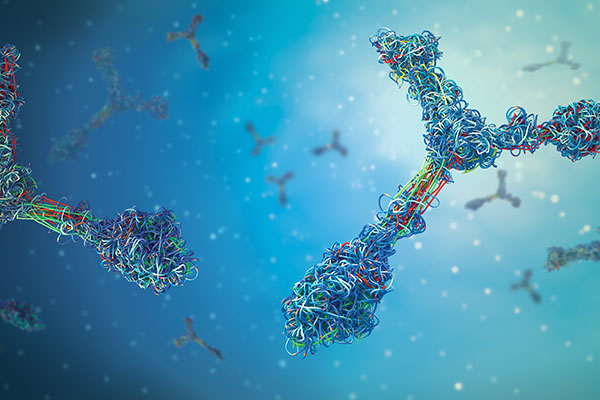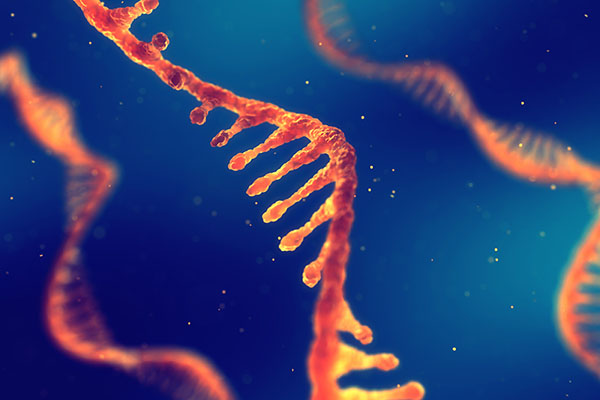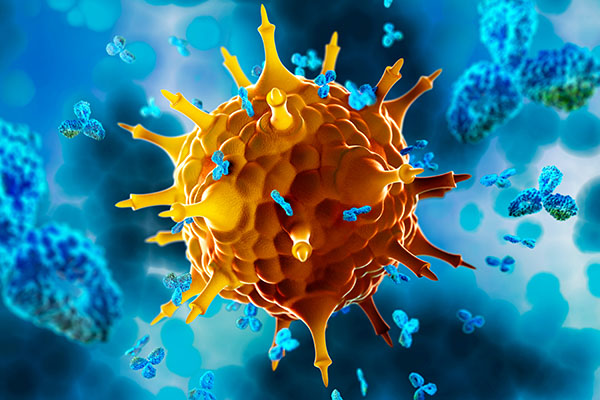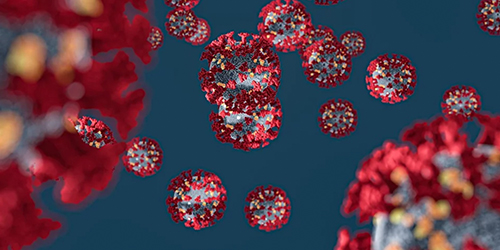Overview Background Workflows Case study Products Related Tests Q&A Resources
Complement System Overview
-
What Is The Complement System?
The complement system, also known as complement cascade, is an important part of the innate immune response
consisting of a series of small proteins in the plasma or on cell surfaces. All the complement proteins interact
and work together to “complement” or enhance the immune system to fight against pathogens. Currently, the
complement system is recognized as a key bridge between the innate and adaptive immune systems to keep the
immune homeostasis of organisms.
-
How Does The Complement System Work?
-
Membrane lysis: once the complement system is activated, the terminal effector membrane attack complex
(MAC) of cascade reactions is formed on the cell membranes of microbes, causing cell lysis or death
through the disruption of the phospholipid bilayers of the target cell membrane.
-
Opsonization: during the complement cascade reaction, several important activated complement proteins
(mainly, C3b, C4b, and C1q) are produced, which function as opsonins and bind covalently to pathogens,
leading to the phagocytosis of phagocytes carrying complement receptors.
-
Chemotaxis: byproducts of the complement activation process, such as C3a, C4a, and C5a, serve as
chemoattractants, and recruit phagocytes, neutrophils, macrophages, etc., to participate in the
clearance of pathogens.
-
Other functions: the complement system enhance the immune response also through boosting inflammation
and promoting antibody formation.
-
Complement System Activation
The complement can be initiated by three major pathways: classical (CP), alternative (AP), and lectin (LP)
pathways, all of which merge in the activation of complement C3 and subsequently lead to the formation of the
cytolytic membrane attack complex (MAC), C5b-9.
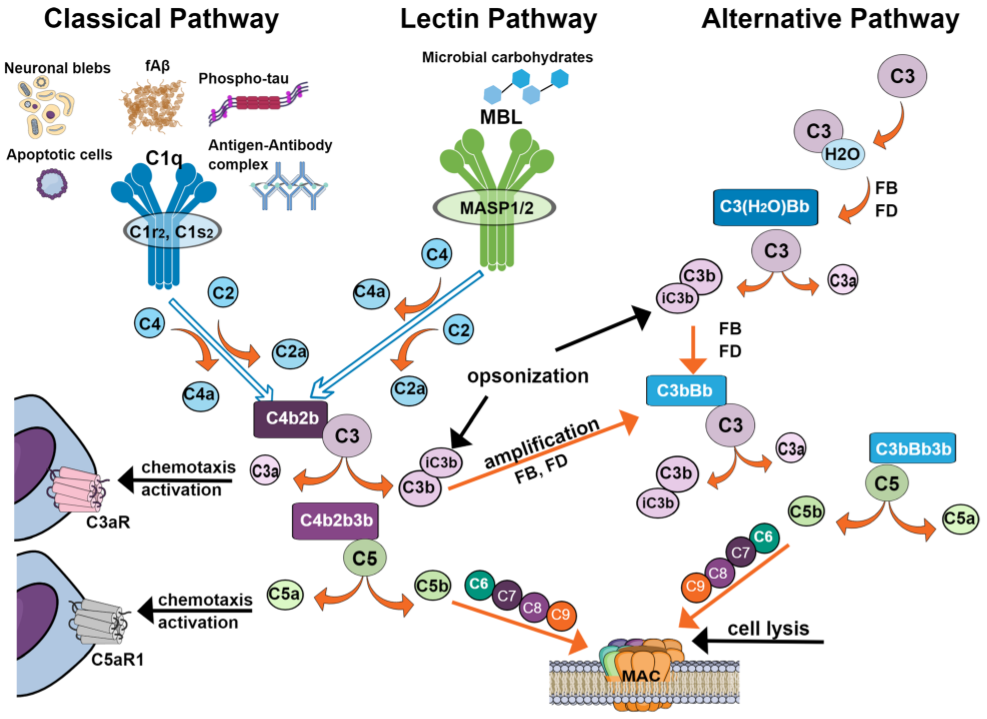 Fig. 1 Activation pathways of the complement system.1, 4
Fig. 1 Activation pathways of the complement system.1, 4
Background of Total Complement Activity Test
Importance of the test
With the advancement of investigation, the complement system is gradually become more and more interesting,
complex, mysterious, and important in inmmune homeostasis and human health. In addition to immune defense, the
complement system also involves in multiple essential biological processes and its dysfunction is closely
related to a broad spectrum of human disorders (see Fig.2). Novel therapy development targeting the complement
system is increasingly important and motivational, and more and more complement biopharmaceuticals have been
developed and evaluated in clinical trials for disease treatment (see Fig. 3).
Total complement activity test provides a comprehensive insight into the activation state of the complement
system to better define the disease occurrence, diagnosis, and treatment response, serving as an useful tool for
complement-centered therapy development.
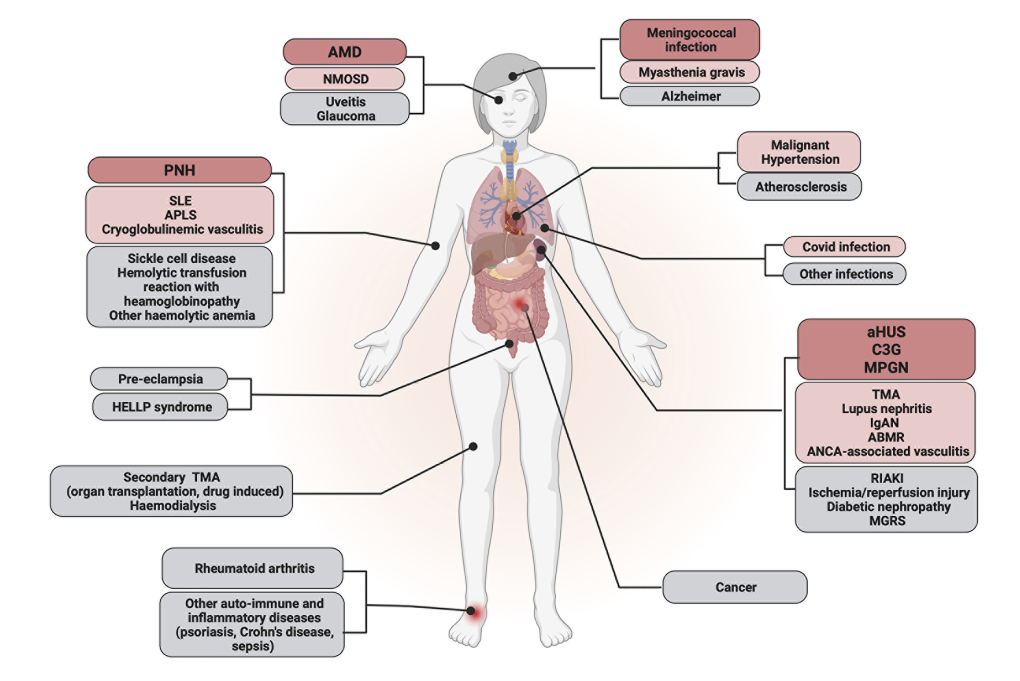 Fig. 2 Complement implication in human diseases.2, 4
Fig. 2 Complement implication in human diseases.2, 4
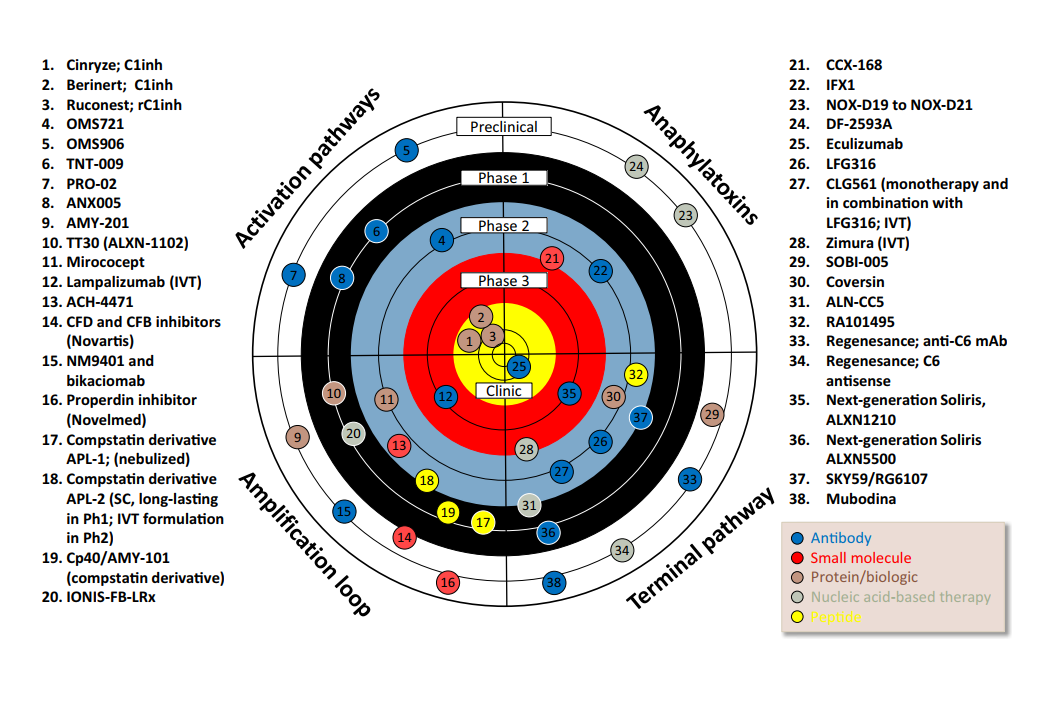 Fig. 3 The complement drug development landscape.3, 4 (Harris, 2018)
Fig. 3 The complement drug development landscape.3, 4 (Harris, 2018)
Methods to test
Total complement activity test is performed mainly to evaluate the activity of the overall complement system or
the activity of each pathway. A variety of methods have been developed to measure the complement activity, such
as hemolysis assays (CH50 or AH50), ELISA assay (LP50), liposome enzymatic assay, in which CH50 and AH50 are the
most commonly used.
Preparation
To characterize the complement function, plasma or serum (especially serum with complement deficiency) is usually
used to perform the complement activity test. Also, the inhibitors, pharmaceuticals, or other
biomelicules/compounds affecting complement activity can be assassed through this complement activity test.
Please send the serum or plasma samples (each > 2 mL) to Creative Biolabs. All the samples to be tested
should labeled clearly and shipped by Dry-Ice.
Result interpretation
A standard curve with a calculation formula will be obtained through our complement activity test. The CH50 or
AH50 value of the tested sample can be obtained through calculation formula. To characterize the activity of
different complement pathway, please compare the CH50/AH50 values with normal values, and the etiology also can
be traced by interpreting the CH50/AH50 values with the individual complement component values.
Leadtime
2-3 weeks. The test time may vary depending on the number of samples, and additional time should be allowed for
additional validation testing or repetition, if necessary.
Total Complement Activity Test Workflows
At Creative Biolabs, total complement activity tests are respectively carried out by CH50 for the complement
classical pathway, AH50 for the complement alternative pathway, and LP50 for the complement lectin pathway. Among
the tests, CH50 and AH50 assays are based on the complement hemolytic activity detection while the LP50 is based on
the enzyme immunoassay of the terminal complement complex detection. All test procedures are shown as follows, both
a one-stop test for all three pathways and a test for any one pathway based on the client’s demands are all
available.
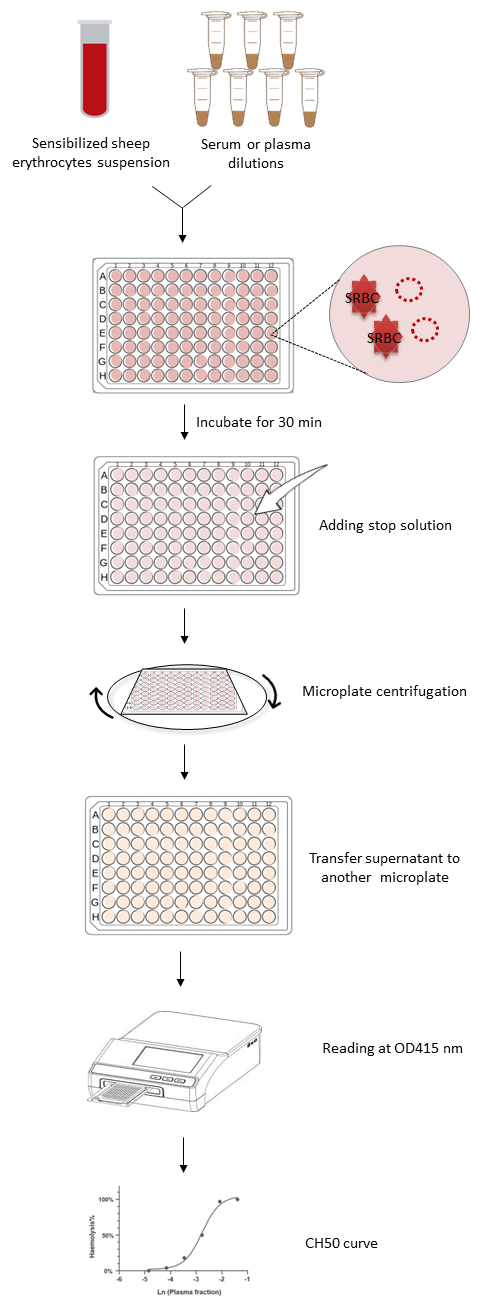 Fig.4 CH50 test workflow.
Fig.4 CH50 test workflow.
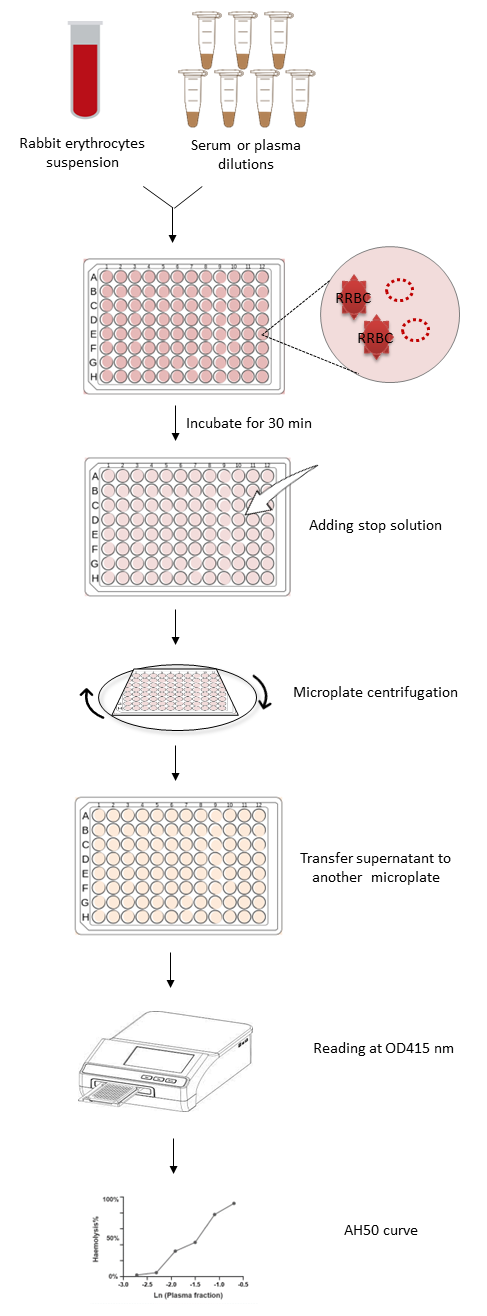 Fig.5 AH50 test workflow.
Fig.5 AH50 test workflow.
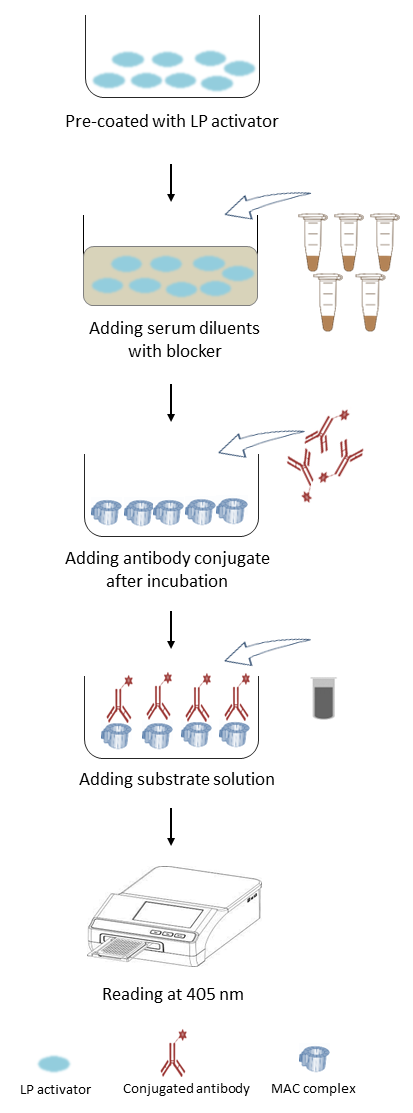 Fig.6 LP50 test workflow.
Fig.6 LP50 test workflow.
Our Features

Well-established complement functional assay platforms

Fast and reliable results with good reproducibility

Related products and customized services based on your specific needs

The Ph.D. scientific team experienced in complement assays and research
Case Study
Fig. 7 Complement CH50 tests. (Creative Biolabs)
The clients sent us 1 patient serum sample for the complement classical pathway test. The CH50 curve was
drawn after we performed the CH50 test using the sensitized sheep erythrocytes. The CH50 value or serum
dilution at 50% hemolysis of sheep red blood cells (SRBC) will be calculated using the curve formula.
Fig. 8 Complement AH50 tests. (Creative Biolabs)
The clients sent us 1 patient plasma for the complement alternative pathway test. The AH50 curve was
drawn after we performed the AH50 test using the rabbit erythrocytes. The AH50 value or serum dilution
at 50% hemolysis of rabbit red blood cells (RRBC) will be calculated using the curve formula.
Available Products for Complement Activity Test at Creative Biolabs
Related Tests
In addition to total complement activity tests, Creative Biolabs also offers a sophisticated menu of other
complement tests and have the expertise to develop customized complement assays based on specific needs. Please note
that all of our products and test services are only for research use only, not for clinical human therapy.
Resources
Creative Biolabs has extensive experience in complement testing, providing functional complement testing
services for classic, lectin, and alternative pathways. We use a variety of different technologies, such as ELISAs,
hemolysis tests, and liposomal lysis, to meet the rigorous testing requirements of each pathway and offer accurate
test results to our customers.
Please contact us to learn more about our complement testing services.
References
-
Schartz, Nicole D., and Andrea J. Tenner. "The good, the bad, and the opportunities of the complement system in neurodegenerative disease." Journal of Neuroinflammation 17.1 (2020): 354.
-
Meuleman, Marie-Sophie, et al. "Ex vivo test for measuring complement attack on endothelial cells: From research to bedside." Frontiers in Immunology 13 (2022): 860689.
-
Harris, Claire L. "Expanding horizons in complement drug discovery: challenges and emerging strategies." Seminars in immunopathology. Vol. 40. Springer Berlin Heidelberg, 2018.
-
under Open Access license CC BY 4.0, without modification
Questions & Answer
A: By measuring complement activity in autoimmune disease models, researchers can gain insights into the role of complement in disease progression, identify potential therapeutic targets, and evaluate the efficacy of complement-modulating treatments. Researchers can utilize the total complement activity test to assess the impact of complement-targeting drugs or therapies on the overall complement system activity and determine their ability to modulate complement function.
A: Various factors, such as sample handling and storage conditions, interferences from contaminants or inhibitors, as well as genetic or acquired complement deficiencies, can potentially influence the results of the total complement activity test.
A: The total complement activity can be assessed using various methods, including hemolytic assays, enzyme-linked immunosorbent assays (ELISAs), and functional complement assays.
A: Conducting the Total Complement Activity Test requires specific and potentially expensive equipment, as well as highly qualified and experienced staff members to carry out and interpret the results correctly. Therefore, it would be more appropriate and efficient for you to use our service for conducting this test.
A: The total complement activity test becomes particularly necessary and beneficial when researchers are studying conditions such as autoimmune diseases, repeated infections, or organ rejection after transplantation, where the complement system's role is critical. This test serves as a tool to investigate more about these conditions.
A: Minimal preparation is needed for conducting this test. While it predominantly revolves around handling biological samples like sera and plasma from humans and animals, it's essential that these are treated and stored correctly. Proper personnel training for handling sensitive biological samples is integral to ensure accurate results.
For Research Use Only.
Related Sections:

 Fig. 1 Activation pathways of the complement system.1, 4
Fig. 1 Activation pathways of the complement system.1, 4
 Fig. 2 Complement implication in human diseases.2, 4
Fig. 2 Complement implication in human diseases.2, 4
 Fig. 3 The complement drug development landscape.3, 4 (Harris, 2018)
Fig. 3 The complement drug development landscape.3, 4 (Harris, 2018)
 Fig.4 CH50 test workflow.
Fig.4 CH50 test workflow.
 Fig.5 AH50 test workflow.
Fig.5 AH50 test workflow.
 Fig.6 LP50 test workflow.
Fig.6 LP50 test workflow.
